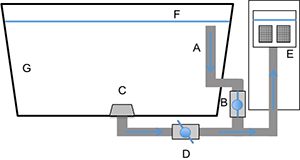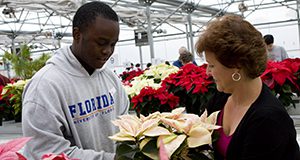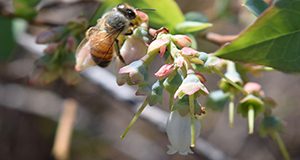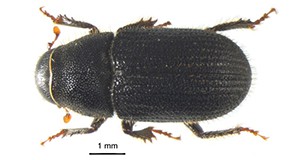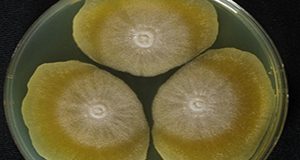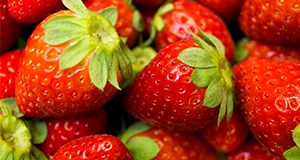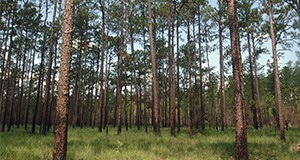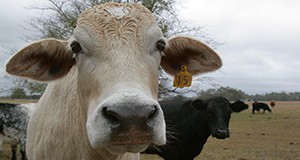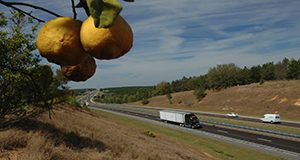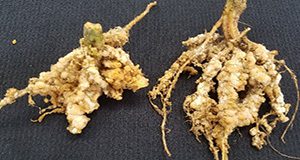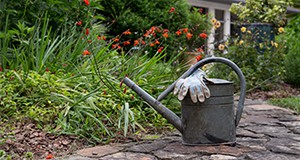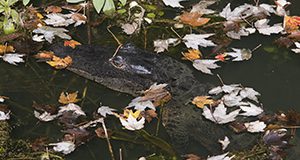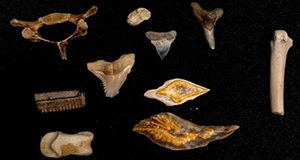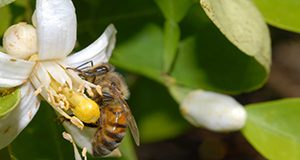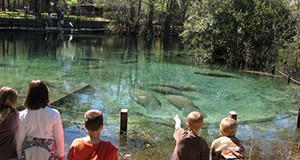As aquaculture production techniques streamline, interest in captive breeding for marine fish species increases. The food, ornamental, and bait industries all benefit from expanding the development of aquaculture techniques for desirable marine fish species. A significant limitation in developing aquaculture protocols for marine fish species is an adequate understanding of viable egg production and larval development. The first step in that process is to efficiently collect fertilized embryos, usually referred to as eggs, for examination and further development. This 6-page fact sheet written by Cortney Ohs, John Marcellus, Eric Cassiano, and Jason Broach and published by the UF/IFAS Program in Fisheries and Aquatic Sciences of the School of Forest Resources and Conservation includes directions for construction and operation of two types of pelagic egg collectors: pre-filter and floating airlift.
http://edis.ifas.ufl.edu/fa211
Author: Susan Gildersleeve
Engaging Millennials in the Workplace
Over 70 million adults born between 1981 and 1996 make up the generation of adults referred to as millennials, the fastest-growing group making up the present-day workforce, with 56 million currently employed or looking for work. One in three individuals in the workplace is a millennial. Because millennials make up such a large portion of the workforce, it is imperative that employers better understand them and understand how to engage them. This 2-page fact sheet written by Lauren Headrick Sweeney, Matthew Benge, and Hannah Carter and published by the UF/IFAS Agricultural Education and Communication Department discusses offers some strategies.
http://edis.ifas.ufl.edu/wc329
Sample Productivity and Cost Estimates of Producing Longan (Dimocarpus longan Lour.) in South Florida
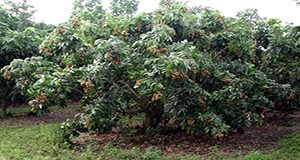
Interest is growing in minor tropical fruit crops. This 6-page publication written by Fredy H. Ballen, Edward A. Evans, Aditya Singh, and Jonathan H. Crane and published by the UF/IFAS Food and Resource Economics Department provides an estimate of the costs and returns associated with the operation of an established longan grove in south Florida. Information presented in this article was obtained through field interviews with growers and industry experts; it reflects a wide variety of production practices in small longan orchards of 1 to 4 acres and should help estimate the financial requirements of operating an established grove.
http://edis.ifas.ufl.edu/fe1049
Alpine Strawberry as a Potential Niche Crop for Florida Growers and Homeowners
Alpine strawberries (Fragaria vesca) produce edible and highly aromatic strawberries known for their excellent eating quality. The berries are fragile and not suitable for long-distance shipping, which inhibits trade on the international market but also provides an opportunity for growers catering to local markets and for homeowners interested in growing this unique and delicious strawberry. This 5-page fact sheet written by Alan Chambers and published by the UF/IFAS Horticultural Sciences Department describes yield and fruit quality for several varieties to guide potential growers. The results of this project are anticipated to benefit growers and homeowners looking to cultivate specialty alpine strawberries.
http://edis.ifas.ufl.edu/hs1326
Pollination Best Practices in Southern Highbush Blueberry in Florida
Southern highbush blueberry is the primary blueberry species grown in Florida. It is dependent upon pollinating insects for adequate pollination and fruit. Some Florida growers have reported cases of low fruit set in recent years, in particular on the cultivars Meadowlark and Emerald, which may have been due in part to poor pollination. This 5-page fact sheet written by Rachel E. Mallinger and Douglas A. Phillips and published by the UF/IFAS Department of Entomology and Nematology will discuss blueberry pollinators, some causes of poor pollination, and current best practices to reduce the possibility of poor pollination of southern highbush blueberry.
http://edis.ifas.ufl.edu/in1237
The Southern Pine Beetle Dendroctonus frontalis (Coleoptera: Curculionidae: Scolytinae)
The southern pine beetle, Dendroctonus frontalis Zimmermann, is the most destructive insect pest of pine in the southern United States. This 8-page fact sheet written by Demian F. Gomez and Jiri Hulcr and published by the UF/IFAS Department of Entomology and Nematology describes the beetle and includes advice on how to monitor for them and strategies for their prevention and control.
http://edis.ifas.ufl.edu/in333
Geosmithia Species in Florida: Common Fungal Symbionts of Wood-Boring Bark Beetles
Geosmithia are fungi associated with wood-boring bark beetles. Most Geosmithia species do no harm to host trees, but the canker-causing Geosmithia morbida and its beetle vector, the walnut twig beetle, cause the disease complex known as thousand cankers disease on walnut trees. Continuous surveys in Florida have found neither Geosmithia morbida nor its beetle vector in the state, but many native Geosmithia species have been recovered. These native species look similar to the pathogenic fungus but are harmless to their plant hosts. This 4-page fact sheet written by Yin-Tse Huang and Jiri Hulcr and published by the UF/IFAS School of Forest Resources and Conservation provides basic guidelines to sample Geosmithia species in the field and information for distinguishing the plant pathogenic Geosmithia morbida from other Geosmithia species.
http://edis.ifas.ufl.edu/fr412
Meloidogyne Hapla, the Northern Root-Knot Nematode, in Florida Strawberries and Associated Double-Cropped Vegetables
Northern root-knot nematodes (Meloidogyne hapla) are rather uncommon nematode parasites of strawberries and vegetables in Florida, but when present they are capable of causing significant crop loss. Root-knot nematodes are largely unknown to strawberry growers in Florida and very little is known about their biology and behavior in the state. This 5-page fact sheet written by J. Desaeger and published by the UF/IFAS Department of Entomology and Nematology is intended to educate and provide information on this nematode to researchers, Extension agents, growers, industry representatives, and other stakeholders in the strawberry and vegetable community.
http://edis.ifas.ufl.edu/in1224
Basic Steps to Creating a Conservation Land Trust in Florida
Conservation land trusts, more commonly called land trusts, are private 501(c)(3) nonprofit organizations that protect land important to your community for its natural, cultural, and recreational value. These publicly supported organizations also sustain healthier and more resilient economic development in your community and throughout the state. This 5-page fact sheet written by Benjamin W. North, Elizabeth Frances Pienaar, and Jessica D. Sullivan and published by the UF/IFAS Wildlife Ecology and Conservation Department outlines the basic steps to creating a land trust and provides links to the necessary documents and resources that will assist you in creating a land trust.
http://edis.ifas.ufl.edu/uw448
Antibiotic Use and Resistance for Beef Cattle Producers
Antibiotic-resistant microorganisms cause millions of illnesses and cost billions of dollars in the United States each year. This 5-page fact sheet written by Chad Carr, Matt Hersom, K. C. Jeong, Nicolas DiLorenzo, Jason Scheffler, Victoria Roberts, Gina Faniola, Stephanie Miller, Haley Denney, Nahilia Williams, and Bianca McCracken and published by the UF/IFAS Department of Animal Sciences discusses the use of antibiotics in cattle production operations and answers some common questions about antibiotics and antibiotic-resistant microorganisms.
http://edis.ifas.ufl.edu/an351
FloRun 331 Peanut Variety
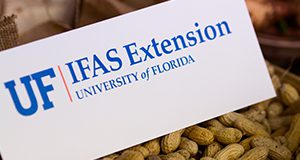
FloRunTM '331' peanut variety was developed by the UF/IFAS North Florida Research and Education Center near Marianna, Florida, and released in 2016. It combines high yield potential with excellent disease tolerance. FloRunTM '331' has a typical runner growth habit with a semi-prominent central stem and medium-green foliage. It has medium runner seed size with high oleic oil chemistry. Learn more about it in this 4-page fact sheet written by Barry L. Tillman and published by the UF/IFAS Agronomy Department.
http://edis.ifas.ufl.edu/ag425
The Electronic Logging Devices Mandate and Hours Of Service for Produce Haulers
Electronic logging devices, or ELDs, became mandatory for commercial motor carriers December 18, 2017. The compliance timeline for the produce industry was delayed with two 90-day waivers. On June 18, 2018, however, ELDs became mandatory for produce haulers as well. The primary purpose behind requiring ELDs was to ensure greater compliance with existing hours of service requirements by motor carriers and their drivers. This 5-page fact sheet written by Fritz Roka, Tara Wade, and Craig Sprouse and published by the UF/IFAS Food and Resource Economics Department reviews HOS rules, clarifies agricultural exceptions to the HOS rules, and offers a preliminary discussion as to how ELDs could affect south Florida produce growers.
edis.ifas.ufl.edu/fe1052
The Economics of Planting New Citrus Groves in Florida in the Era of HLB
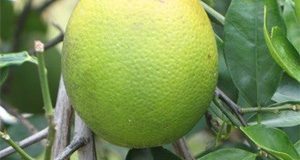
Citrus greening, or huanglongbing (HLB), is a bacterial disease that affects citrus trees’ vascular systems, limiting nutrient uptake. As trees become increasingly affected by the disease, they suffer premature fruit drop, the fruit harvested is smaller and misshapen, and the juice quality is compromised, all resulting in lower yield. To this date there is no cure or successful management strategy to deal with HLB. This 8-page fact sheet written by Ariel Singerman, Marina Burani-Arouca, and Stephen H. Futch and published by the UF/IFAS Food and Resource Economics Department summarizes the results of an analysis of three tree densities under different production and market conditions to determine which density is most profitable.
http://edis.ifas.ufl.edu/fe1050
Nematodes Parasitizing Hops in Florida
The growth of Florida’s craft beer industry has created new opportunities for Florida growers to establish commercial hop (Humulus lupulus) operations. However, many challenges including several nematode species make the establishment of this industry difficult. This 4-page fact sheet written by Johan Desaeger and published by the UF/IFAS Department of Entomology and Nematology describes nematodes that prey on hops and suggests some strategies for preventing nematode damage to safeguard this emerging industry.
http://edis.ifas.ufl.edu/in1229
Manual de los Reglamentos del Agua en Florida: Distritos de Conservación de Suelos y Aguas
Los capítulos anteriores de este Manual de los Reglamentos del Agua en Florida discuten las agencias estatales involucradas en la gestión de los recursos hídricos, como el Departamento de Protección Ambiental de Florida (FE593), los Distritos de Administración de Agua de Florida (FE594), la Comisión de Conservación de Pesca y Vida Silvestre de Florida (FE595), el Departamento de Florida de Agricultura y Servicios al Consumidor (FE596) y el Departamento de Salud de la Florida (FE597). Para cuestiones de recursos hídricos en áreas agrícolas, la discusión de las agencias que trabajan en el manejo de los recursos hídricos sería incompleta sin los Distritos de Conservación de Suelos y Agua de la Florida. Written by Tatiana Borisova, Michael T. Olexa, y Jarrett Davis and published by the UF/IFAS Food and Resource Economics Department.
http://edis.ifas.ufl.edu/fe1048
Manual de los Reglamentos del Agua en Florida: Ley del Agua de 2016
La Ley del Agua de la Florida de 2016 es una política de agua integral que aborda los problemas críticos de abastecimiento de agua y calidad de la Florida. Entró en vigor el 1 de julio de 2016. La Ley del Agua de la Florida de 2016 creí la Ley de Protección de Acuíferos y Manantiales de Florida, codificó la Iniciativa de la Florida Central y revisó la Ley de los Everglades y Estuarios del Norte. Written by Michael Olexa, Tatiana Borisova, and Jarrett Davis and published by the UF/IFAS Food and Resource Economics Department.
http://edis.ifas.ufl.edu/fe1046
Manual de los Reglamentos del Agua de Florida: Ley de Protección de Acuíferos y Manantiales
La Ley del Agua de Florida de 2016, una política integral de agua que aborda los problemas críticos del suministro y la calidad de agua en la Florida, entró en vigor el 1 de julio de 2016. Creó la Ley de Protección de Acuíferos y Manantiales de Florida, que protege los manantiales alimentados por el acuífero floridano. Written by Michael Olexa, Tatiana Borisova, and Jarrett Davis and published by the UF/IFAS Food and Resource Economics Department.
http://edis.ifas.ufl.edu/fe1047
Florida’s Geologic History
Hundreds of millions of years of geologic processes lead to the formation of Florida. This 7-page fact sheet written by Kyle W. Bostick, Shelly A. Johnson, and Martin B. Main and published by the UF/IFAS Department of Wildlife Ecology and Conservation describes the 3 primary processes that created Florida as we know it today: plate tectonics, carbonate production, and siliciclastic invasion, as well as major processes like sea-level change that continue to reform the morphology of the Florida Platform today.
http://edis.ifas.ufl.edu/uw208
Florida Honey Bee Plants
Climate, plant communities, and timing of floral resources differ significantly between north, central, and south Florida. While many plants are acceptable pollen producers for honey bees, fewer yield enough nectar to produce a surplus honey crop. The tables in this 12-page fact sheet written by Mary Christine Bammer, William H Kern, and Jamie D. Ellis and published by the UF/IFAS Entomology and Nematology Department list the nectar-bearing plants that are present to some degree in each region and the bloom times for each plant.
http://edis.ifas.ufl.edu/in1223
Los recursos hidricos de Florida
Tatiana Borisova y Tara Wade, Departamento de Economia de Alimentos y Recursos, UF/IFAS. This is the Spanish translation of “Florida’s Water Resources,” available in English here.
http://edis.ifas.ufl.edu/fe1044
